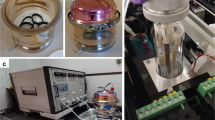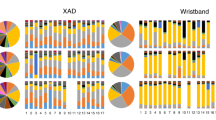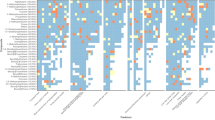Abstract
Background
Exposure assessment is critical for connecting environmental pollutants to health outcomes and evaluating impacts of interventions or environmental policies. Silicone wristbands (SWBs) show promise for multi-pollutant exposure assessment, including polycyclic aromatic hydrocarbons (PAHs), a ubiquitous class of toxic environmental pollutants.
Objective
To review published studies where SWBs were worn on the wrist for human environmental exposure assessments and evaluate the ability of SWBs to capture personal exposures, identify gaps which need to be addressed to implement this tool, and make recommendations for future studies to advance the field of exposure science through utilization of SWBs.
Methods
We performed a systematic search and a cited reference search in Scopus and extracted key study descriptions.
Results
Thirty-nine unique studies were identified, with analytes including PAHs, pesticides, flame retardants, and tobacco products. SWBs were shipped under ambient conditions without apparent analyte loss, indicating utility for global exposure and health studies. Nineteen articles detected a total of 60 PAHs in at least one SWB. Correlations with other concurrent biological and air measurements indicate the SWB captures exposure to flame retardants, tobacco products, and PAHs.
Significance
SWBs show promise as a simple-to-deploy tool to estimate environmental and occupational exposures to chemical mixtures, including PAHs.
This is a preview of subscription content, access via your institution
Access options
Subscribe to this journal
Receive 6 print issues and online access
$259.00 per year
only $43.17 per issue
Buy this article
- Purchase on Springer Link
- Instant access to full article PDF
Prices may be subject to local taxes which are calculated during checkout

Similar content being viewed by others
References
Weisskopf MG, Webster TF. Trade-offs of personal vs. more proxy exposure measures in environmental. Epidemiol Epidemiol. 2017;28:635–43. https://doi.org/10.1097/EDE.0000000000000686.
Needham LL, Barr DB, Calafat AM. Characterizing children’s exposures: beyond NHANES. Neurotoxicology. 2005;26:547–53. https://doi.org/10.1016/j.neuro.2004.09.006.
Koehler KA, Peters TM. New methods for personal exposure monitoring for airborne particles. Curr Environ Health Rep. 2015;2:399–411. https://doi.org/10.1007/s40572-015-0070-z.
Anderson KA, Points GL, Donald CE, Dixon HM, Scott RP, Wilson G, et al. Preparation and performance features of wristband samplers and considerations for chemical exposure assessment. J Exposure Sci Environ Epidemiol. 2017;27:551–9. https://doi.org/10.1038/jes.2017.9.
O’Connell SG, Kincl LD, Anderson KA. Silicone wristbands as personal passive samplers. Environ Sci Technol. 2014;48:3327–35. https://doi.org/10.1021/es405022f.
Bergmann AJ, North PE, Vasquez L, Bello H, del Carmen Gastañaga Ruiz M, Anderson KA. Multi-class chemical exposure in rural Peru using silicone wristbands. J Exposure Sci Environ Epidemiol. 2017;27:560–8. https://doi.org/10.1038/jes.2017.12.
Quintana PJE, Hoh E, Dodder NG, Matt GE, Zakarian JM, Anderson KA, et al. Nicotine levels in silicone wristband samplers worn by children exposed to secondhand smoke and electronic cigarette vapor are highly correlated with child’s urinary cotinine. J Exposure Sci Environ Epidemiol. 2019;29:733–41. https://doi.org/10.1038/s41370-019-0116-7.
Quintana PJE, Lopez-Galvez N, Dodder NG, Hoh E, Matt GE, Zakarian JM, et al. Nicotine, cotinine and tobacco-specific nitrosamines (TSNAs) measured in children’s silicone wristbands in relation to secondhand smoke and e-cigarette vapor exposure. Nicotine Tob Res.2021;23,3:592–9. https://doi.org/10.1093/ntr/ntaa140.
Hammel SC, Phillips AL, Hoffman K, Stapleton HM. Evaluating the use of silicone wristbands to measure personal exposure to brominated flame retardants. Environ Sci Technol. 2018;52,20:11875–85. https://doi.org/10.1021/acs.est.8b03755.
Hammel SC, Hoffman K, Phillips AL, Levasseur JL, Lorenzo AM, Webster TF, et al. Comparing the use of silicone wristbands, hand wipes, and dust to evaluate children’s exposure to flame retardants and plasticizers. Environ Sci Technol. 2020;54:4484–94. https://doi.org/10.1021/acs.est.9b07909.
Kile ML, Scott RP, O’Connell SG, Lipscomb S, MacDonald M, McClelland M, et al. Using silicone wristbands to evaluate preschool children’s exposure to flame retardants. Environ Res. 2016;147:365–72. https://doi.org/10.1016/j.envres.2016.02.034.
Travis SC, Aga DS, Queirolo EI, Olson JR, Daleiro M, Kordas K. Catching flame retardants and pesticides in silicone wristbands: evidence of exposure to current and legacy pollutants in Uruguayan children. Sci Total Environ. 2020;740:140136. https://doi.org/10.1016/j.scitotenv.2020.140136.
De Vecchi R, da Silveira Carvalho Ripper J, Roy D, Breton L, Germano Marciano A, Bernardo de Souza PM, et al. Using wearable devices for assessing the impacts of hair exposome in Brazil. Sci Rep. 2019;9:13357. https://doi.org/10.1038/s41598-019-49902-7.
Dixon HM, Armstrong G, Barton M, Bergmann AJ, Bondy M, Halbleib ML, et al. Discovery of common chemical exposures across three continents using silicone wristbands. R Soc Open Sci. 2019;6:181836. https://doi.org/10.1098/rsos.181836.
Gibson EA, Stapleton HM, Calero L, Holmes D, Burke K, Martinez R, et al. Differential exposure to organophosphate flame retardants in mother-child pairs. Chemosphere. 2018;219:567–73. https://doi.org/10.1016/j.chemosphere.2018.12.008.
Lipscomb ST, McClelland MM, MacDonald M, Cardenas A, Anderson KA, Kile ML. Cross-sectional study of social behaviors in preschool children and exposure to flame retardants. Environ Health. 2017;16:23 https://doi.org/10.1186/s12940-017-0224-6.
Romanak KA, Wang S, Stubbings WA, Hendryx M, Venier M, Salamova A. Analysis of brominated and chlorinated flame retardants, organophosphate esters, and polycyclic aromatic hydrocarbons in silicone wristbands used as personal passive samplers. J Chromatogr A. 2019;1588:41–47. https://doi.org/10.1016/j.chroma.2018.12.041.
Wang Y, Peris A, Rifat MR, Ahmed SI, Aich N, Nguyen LV, et al. Measuring exposure of e-waste dismantlers in Dhaka, Bangladesh to organophosphate esters and halogenated flame retardants using silicone wristbands and T-shirts. Sci Total Environ. 2020;720:137480. https://doi.org/10.1016/j.scitotenv.2020.137480.
Wang S, Romanak KA, Hendryx M, Salamova A, Venier M. Association between thyroid function and exposures to brominated and organophosphate flame retardants in rural central appalachia. Environ Sci Technol. 2020;54:325–34. https://doi.org/10.1021/acs.est.9b04892.
Reddam A, Tait G, Herkert N, Hammel SC, Stapleton HM, Volz DC. Longer commutes are associated with increased human exposure to tris(1,3-dichloro-2-propyl) phosphate. Environ Int. 2020;136:105499. https://doi.org/10.1016/j.envint.2020.105499.
Craig JA, Ceballos DM, Fruh V, Petropoulos ZE, Allen JG, Calafat AM, et al. Exposure of nail salon workers to phthalates, Di(2-ethylhexyl) terephthalate, and organophosphate esters: a pilot study. Environ Sci Technol. 2019;53:14630–7. https://doi.org/10.1021/acs.est.9b02474.
Wise CF, Hammel SC, Herkert N, Ma J, Motsinger-Reif A, Stapleton HM, et al. Comparative exposure assessment using silicone passive samplers indicates that domestic dogs are sentinels to support human health research. Environ Sci Technol. 2020;54:7409–19. https://doi.org/10.1021/acs.est.9b06605.
Hammel SC, Hoffman K, Webster TF, Anderson KA, Stapleton HM. Measuring personal exposure to organophosphate flame retardants using silicone wristbands and hand wipes. Environ Sci Technol. 2016;50:4483–91. https://doi.org/10.1021/acs.est.6b00030.
Kassotis CD, Herkert NJ, Hammel SC, Hoffman K, Xia Q, Kullman SW, et al. Thyroid receptor antagonism of chemicals extracted from personal silicone wristbands within a papillary thyroid cancer pilot study. Environ Sci Technol. 2020;54:15296–312. https://doi.org/10.1021/acs.est.0c05972.
Nguyen LV, Gravel S, Labrèche F, Bakhiyi B, Verner M-A, Zayed J, et al. Can silicone passive samplers be used for measuring exposure of e-waste workers to flame retardants? Environ Sci Technol. 2020;54:15277–86. https://doi.org/10.1021/acs.est.0c05240.
Wang S, Romanak KA, Tarallo S, Francavilla A, Viviani M, Vineis P, et al. The use of silicone wristbands to evaluate personal exposure to semi-volatile organic chemicals (SVOCs) in France and Italy. Environ Pollut. 2020;267:115490. https://doi.org/10.1016/j.envpol.2020.115490.
Vidi P-A, Anderson KA, Chen H, Anderson R, Salvador-Moreno N, Mora DC, et al. Personal samplers of bioavailable pesticides integrated with a hair follicle assay of DNA damage to assess environmental exposures and their associated risks in children. Mutat Res/Genet Toxicol Environ Mutagenesis. 2017;822:27–33. https://doi.org/10.1016/j.mrgentox.2017.07.003.
Aerts R, Joly L, Szternfeld P, Tsilikas K, De Cremer K, Castelain P, et al. Silicone wristband passive samplers yield highly individualized pesticide residue exposure profiles. Environ Sci Technol. 2018;52:298–307. https://doi.org/10.1021/acs.est.7b05039.
Donald CE, Scott RP, Blaustein KL, Halbleib ML, Sarr M, Jepson PC, et al. Silicone wristbands detect individuals’ pesticide exposures in West Africa. R Soc Open Sci. 2016;3:160433. https://doi.org/10.1098/rsos.160433.
Harley KG, Parra KL, Camacho J, Bradman A, Nolan JES, Lessard C, et al. Determinants of pesticide concentrations in silicone wristbands worn by Latina adolescent girls in a California farmworker community: the COSECHA youth participatory action study. Sci Total Environ. 2019;652:1022–9. https://doi.org/10.1016/j.scitotenv.2018.10.276.
Dixon HM, Scott RP, Holmes D, Calero L, Kincl LD, Waters KM, et al. Silicone wristbands compared with traditional polycyclic aromatic hydrocarbon exposure assessment methods. Anal Bioanal Chem. 2018;410:3059–71. https://doi.org/10.1007/s00216-018-0992-z.
Hendryx M, Wang S, Romanak KA, Salamova A, Venier M. Personal exposure to polycyclic aromatic hydrocarbons in Appalachian mining communities. Environ Pollut. 2020;257:113501. https://doi.org/10.1016/j.envpol.2019.113501.
Paulik LB, Hobbie KA, Rohlman D, Smith BW, Scott RP, Kincl L, et al. Environmental and individual PAH exposures near rural natural gas extraction. Environ Pollut. 2018;241:397–405. https://doi.org/10.1016/j.envpol.2018.05.010.
Reche C, Viana M, van Drooge BL, Fernández FJ, Escribano M, Castaño-Vinyals G, et al. Athletes’ exposure to air pollution during World Athletics Relays: a pilot study. Sci Total Environ. 2020;717:137161. https://doi.org/10.1016/j.scitotenv.2020.137161.
Rohlman D, Dixon HM, Kincl L, Larkin A, Evoy R, Barton M, et al. Development of an environmental health tool linking chemical exposures, physical location and lung function. BMC Public Health. 2019;19:854. https://doi.org/10.1186/s12889-019-7217-z.
Wang S, Romanak KA, Stubbings WA, Arrandale VH, Hendryx M, Diamond ML, et al. Silicone wristbands integrate dermal and inhalation exposures to semi-volatile organic compounds (SVOCs). Environ Int. 2019;132:105104. https://doi.org/10.1016/j.envint.2019.105104.
Rohlman D, Donatuto J, Heidt M, Barton M, Campbell L, Anderson KA, et al. A case study describing a community-engaged approach for evaluating polycyclic aromatic hydrocarbon exposure in a native american community. Int J Environ Res Public Health. 2019;16:327. https://doi.org/10.3390/ijerph16030327.
Manzano CA, Dodder NG, Hoh E, Morales R. Patterns of personal exposure to urban pollutants using personal passive samplers and GC × GC/ToF–MS. Environ Sci Technol. 2019;53:614–24. https://doi.org/10.1021/acs.est.8b06220.
Baum JLR, Bakali U, Killawala C, Santiago KM, Dikici E, Kobetz EN, et al. Evaluation of silicone-based wristbands as passive sampling systems using PAHs as an exposure proxy for carcinogen monitoring in firefighters: evidence from the firefighter cancer initiative. Ecotoxicol Environ Saf. 2020;205:111100. https://doi.org/10.1016/j.ecoenv.2020.111100.
Caban-Martinez AJ, Feliciano PL, Baum J, Bakali UF, Santiago KM, Solle NS, et al. Objective measurement of carcinogens among dominican republic firefighters using silicone-based wristbands. JCO Glob Oncol. 2020;6:15–15. https://doi.org/10.1200/go.20.90000.
Doherty BT, Pearce JL, Anderson KA, Karagas MR, Romano ME. Assessment of multipollutant exposures during pregnancy using silicone wristbands. Front Public Health. 2020;8:547239. https://doi.org/10.3389/fpubh.2020.547239.
Santiago KM, Louzado‐Feliciano P, Baum J, Bakali U, Caban‐Martinez AJ. Self‐reported and objectively measured occupational exposures, health, and safety concerns among fishermen: a cross‐sectional Fishing Industry Safety and Health (FISH) pilot study. Am J Ind Med. 2020;64(1):58–69. https://doi.org/10.1002/ajim.23198.
Martin A, Margoum C, Jolivet A, Assoumani A, El Moujahid B, Randon J, et al. Calibration of silicone rubber rods as passive samplers for pesticides at two different flow velocities: Modeling of sampling rates under water boundary layer and polymer control. Environ Toxicol Chem. 2018;37:1208–18. https://doi.org/10.1002/etc.4050.
Ahrens L, Daneshvar A, Lau AE, Kreuger J. Characterization and application of passive samplers for monitoring of pesticides in water. J Vis Exp. 2016;114:54053. https://doi.org/10.3791/54053.
Tromp PC, Beeltje H, Okeme JO, Vermeulen R, Pronk A, Diamond ML. Calibration of polydimethylsiloxane and polyurethane foam passive air samplers for measuring semi volatile organic compounds using a novel exposure chamber design. Chemosphere. 2019;227:435–43. https://doi.org/10.1016/j.chemosphere.2019.04.043.
Seethapathy S, Górecki T. Applications of polydimethylsiloxane in analytical chemistry: a review. Anal Chim Acta. 2012;750:48–62. https://doi.org/10.1016/j.aca.2012.05.004.
Okeme JO, Nguyen LV, Lorenzo M, Dhal S, Pico Y, Arrandale VH, et al. Polydimethylsiloxane (silicone rubber) brooch as a personal passive air sampler for semi-volatile organic compounds. Chemosphere. 2018;208:1002–7. https://doi.org/10.1016/j.chemosphere.2018.05.196.
Wan Y, Diamond ML, Siegel JA. Elevated concentrations of semivolatile organic compounds in social housing multiunit residential building apartments. Environ Sci Technol Lett. 2020;7:191–7. https://doi.org/10.1021/acs.estlett.0c00068.
Poutasse CM, Poston WSC, Jahnke SA, Haddock CK, Tidwell LG, Hoffman PD, et al. Discovery of firefighter chemical exposures using military-style silicone dog tags. Environ Int. 2020;142:105818. https://doi.org/10.1016/j.envint.2020.105818.
Poutasse CM, Herbstman JB, Peterson ME, Gordon J, Soboroff PH, Holmes D, et al. Silicone pet tags associate tris(1,3-dichloro-2-isopropyl) phosphate exposures with feline hyperthyroidism. Environ Sci Technol. 2019;53:9203–13. https://doi.org/10.1021/acs.est.9b02226.
ATSDR. Toxicological profile for polycyclic aromatic hydrocarbons (PAHs). Agency for Toxic Substances and Disease Registry: 1995. Atlanta, Georgia. https://www.atsdr.cdc.gov/toxprofiles/tp69.pdf.
WHO. WHO guidelines for indoor air quality: selected pollutants. World Health Organization, 2010. Bonn, Germany. https://www.euro.who.int/__data/assets/pdf_file/0009/128169/e94535.pdf.
Perera F, Tang D, Whyatt R, Lederman SA, Jedrychowski W. DNA damage from polycyclic aromatic hydrocarbons measured by benzo[a]pyrene-DNA adducts in mothers and newborns from Northern Manhattan, The World Trade Center Area, Poland, and China. Cancer Epidemiol Prev Biomark. 2005;14:709–14. https://doi.org/10.1158/1055-9965.EPI-04-0457.
Perera F, Viswanathan S, Whyatt R, Tang D, Miller RL, Rauh V. Children’s environmental health research—highlights from the Columbia Center for Children’s Environmental Health. Ann N Y Acad Sci. 2006;1076:15–28. https://doi.org/10.1196/annals.1371.018.
Perera, Virginia R,M,WR, Wei-Yann T, Deliang T, Diurka D, et al. Effect of prenatal exposure to airborne polycyclic aromatic hydrocarbons on neurodevelopment in the first 3 years of life among inner-city children. Environ Health Perspect. 2006;114:1287–92. https://doi.org/10.1289/ehp.9084.
Perera F, Tang W-y, Herbstman J, Tang D, Levin L, Miller R, et al. Relation of DNA methylation of 5’-CpG island of ACSL3 to transplacental exposure to airborne polycyclic aromatic hydrocarbons and childhood asthma. PLoS ONE. 2009;4:1–14. https://doi.org/10.1371/journal.pone.0004488.
Andersson JT, Achten C. Time to say goodbye to the 16 EPA PAHs? Toward an up-to-date use of PACs for environmental purposes. Polycycl Aromat Compd. 2015;35:330–54. https://doi.org/10.1080/10406638.2014.991042.
Richter-Brockmann S, Achten C. Analysis and toxicity of 59 PAH in petrogenic and pyrogenic environmental samples including dibenzopyrenes, 7H-benzo[c]fluorene, 5-methylchrysene and 1-methylpyrene. Chemosphere. 2018;200:495–503. https://doi.org/10.1016/j.chemosphere.2018.02.146.
Wooding M, Rohwer ER, Naudé Y. Chemical profiling of the human skin surface for malaria vector control via a non-invasive sorptive sampler with GC×GC-TOFMS. Anal Bioanal Chem. 2020;412:5759–77. https://doi.org/10.1007/s00216-020-02799-y.
Bergmann A. Personal communication (July, 2020).
Diamond M. Personal communication (June, 2020).
Donald C. Personal communication (June, 2020).
Viana M. Personal communication (June, 2020).
Gibson EA, Stapleton HM, Calero L, Holmes D, Burke K, Martinez R, et al. Differential exposure to organophosphate flame retardants in mother-child pairs. Chemosphere. 2019;219:567–73. https://doi.org/10.1016/j.chemosphere.2018.12.008.
Wania F, Shunthirasingham C. Passive air sampling for semi-volatile organic chemicals. Environ Sci: Process Impacts. 2020. https://doi.org/10.1039/D0EM00194E.
Lin EZ, Esenther S, Mascelloni M, Irfan F, Godri Pollitt KJ. The fresh air wristband: a wearable air pollutant sampler. Environ Sci Technol Lett. 2020;7:308–14. https://doi.org/10.1021/acs.estlett.9b00800.
Okeme JO, Parnis JM, Poole J, Diamond ML, Jantunen LM. Polydimethylsiloxane-air partition ratios for semi-volatile organic compounds by GC-based measurement and COSMO-RS estimation: rapid measurements and accurate modelling. Chemosphere. 2016;156:204–11. https://doi.org/10.1016/j.chemosphere.2016.04.094.
Mayer P, Vaes WHJ, Hermens JLM. Absorption of hydrophobic compounds into the poly(dimethylsiloxane) coating of solid-phase microextraction fibers: high partition coefficients and fluorescence microscopy images. Anal Chem. 2000;72:459–64. https://doi.org/10.1021/ac990948f.
Mitro SD, Dodson RE, Singla V, Adamkiewicz G, Elmi AF, Tilly MK, et al. Consumer product chemicals in indoor dust: a quantitative meta-analysis of U.S. studies. Environ Sci Technol. 2016;50:10661–72. https://doi.org/10.1021/acs.est.6b02023.
Eichler CMA, Hubal EAC, Xu Y, Cao J, Bi C, Weschler CJ, et al. Assessing human exposure to SVOCs in materials, products, and articles: a modular mechanistic framework. Environ Sci Technol. 2021;55:25–43. https://doi.org/10.1021/acs.est.0c02329.
Okeme JO, Yang C, Abdollahi A, Dhal S, Harris SA, Jantunen LM, et al. Passive air sampling of flame retardants and plasticizers in Canadian homes using PDMS, XAD-coated PDMS and PUF samplers. Environ Pollut. 2018;239:109–17. https://doi.org/10.1016/j.envpol.2018.03.103.
Acknowledgements
The authors thank all contacted article authors for providing additional study information.
Funding
Funding for this paper was provided by the Tobacco-Related Disease Research Program Grant #: 28PT-0079 (PI PJQ) as a student supplement to LH.
Author information
Authors and Affiliations
Corresponding author
Ethics declarations
competing interests
The authors declare no competing interests.
Additional information
Publisher’s note Springer Nature remains neutral with regard to jurisdictional claims in published maps and institutional affiliations.
Supplementary information
Rights and permissions
About this article
Cite this article
Hamzai, L., Lopez Galvez, N., Hoh, E. et al. A systematic review of the use of silicone wristbands for environmental exposure assessment, with a focus on polycyclic aromatic hydrocarbons (PAHs). J Expo Sci Environ Epidemiol 32, 244–258 (2022). https://doi.org/10.1038/s41370-021-00359-9
Received:
Revised:
Accepted:
Published:
Issue Date:
DOI: https://doi.org/10.1038/s41370-021-00359-9
Keywords
This article is cited by
-
Wearable Passive Samplers for Assessing Environmental Exposure to Organic Chemicals: Current Approaches and Future Directions
Current Environmental Health Reports (2023)
-
Operationalizing the Exposome Using Passive Silicone Samplers
Current Pollution Reports (2022)



